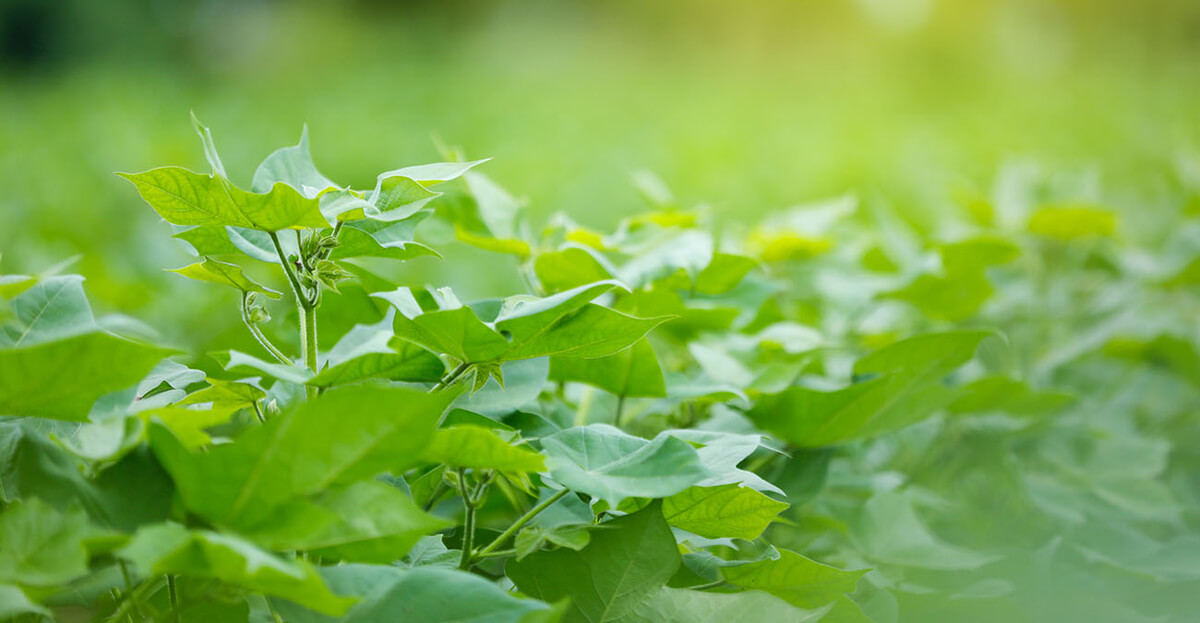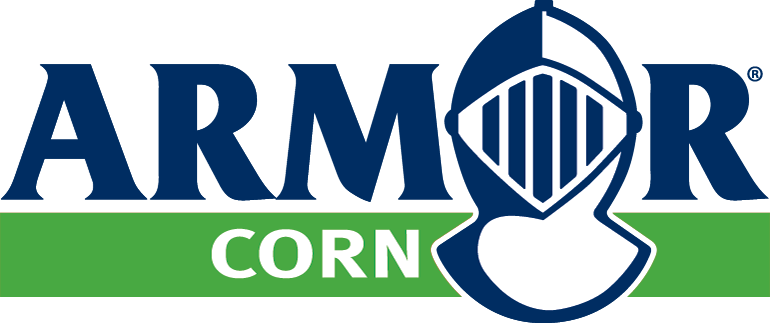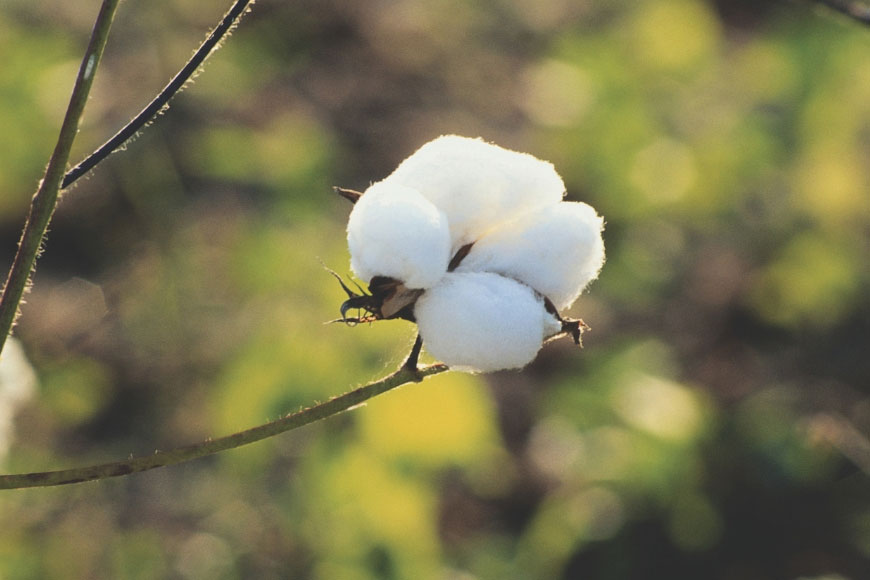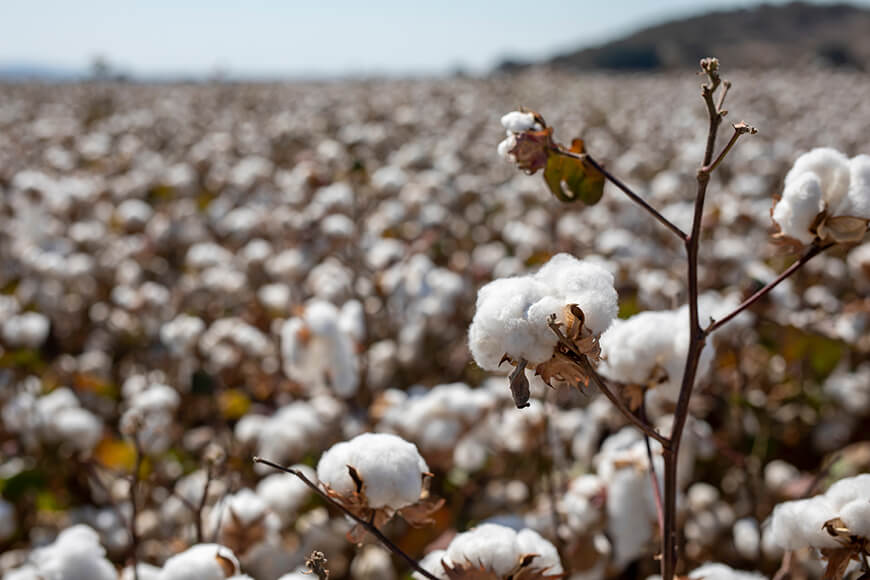
Potassium is a critical macronutrient for cotton production and is needed in large quantities for optimal performance. When potassium is lacking, it can result in low lint quality, poor boll development and reduced uptake of other nutrients since it helps translocate them throughout the plant.
Is potassium deficiency limiting your cotton fields? It could be. According to NutriSolutions® tissue sample data, about 94% of cotton samples come back deficient. 1 Here’s what you need to know about the macronutrient.
Cotton Potassium Uses
Cotton is a key component of many critical functions in the cotton plant, including:
- Seed development
- Fiber quality development
- Photosynthesis
- Osmoregulation
- Evapotranspiration
- Translocation within the plant
- pH regulation on the leaf surface
Why does the pH level of the leaf surface matter? All applications you spray over the top, from crop protection to foliar nutrition, have different pH ranges they come out of the spray tank with. If the pH of that spray solution and the leaf surface are incompatible, absorption and efficacy is impacted.
Potassium is also known for being an elevator nutrient. It pulls other nutrients with it as it travels from soil to root and up into the plant, making it an important partner for the translocation of other nutrients like nitrogen, sulfur, magnesium, and boron.
Most potassium uptake in cotton happens in the six-week period just behind early flowering. After that, root development slows down as the plant sets its reproductive locations. It starts to scale back its energy expenditure on root development and spends more of it on reproduction.
Cotton Potassium Requirements
Potassium requirements vary based on yield goals and management styles, but in general, cotton requires 52 units of potassium to make one bale or 500 pounds of finished clean cotton. Growers typically shoot for 1-1.5 bales per dryland acre and 2.5-3 bales per irrigated acre. When aiming for 3 bales per acre, you will need about 156 pounds per acre of potassium. If you’re using muriate of potash, for example, that would translate to about 260 pounds of fertilizer per acre.
Cotton Potassium Application Strategies
There are several main ways growers deliver potassium to cotton. The first would be a pre-plant application. However, relying completely on a pre-plant approach can lead to some problems, as potassium is mobile in the soil and can leach, especially in soils with low organic matter.
Another strategy is splitting applications in two, applying half of the requirement pre-plant and sidedressing the second half around squaring or flowering. This is more favorable because it reduces chances of nutrient losses through leaching and gives your crop additional nutrition at key growth stages.
Finally, the most ideal scenario includes two over-the-top applications if you can swing it. This involves applying one-third of the requirement pre-plant, one-third prior to or at squaring and the final third at flowering. This spoon feeds the crop, ensuring it has what it needs when it needs it most. Growers often include nitrogen, sulfur and some micronutrients along with their split applications, adding more value to the pass.
Foliar applications are also an effective option. The most beneficial, plant-available form for foliar applications is potassium acetate, which is available in a product like MAX-IN® K macronutrient. This is best applied at early flowering and can help if you’re late in your potassium deficiency identification or want to carry the crop to the next level, ensuring it has everything it needs right when it needs it.
We’ve also seen great crop responses in splitting MAX-IN® K applications. Growers have been successful when applying at early first bloom and then again as boll starts to form.
Potassium Deficiency Identification
I often get asked what symptoms to look for in identifying potassium deficiency. Unfortunately, by the time you see visible signs, yield loss is likely imminent. Cotton doesn’t visually communicate deficiencies the same way a crop like corn does. The best way to identify a field’s needs is by taking soil samples before the season to pinpoint preemptive needs and follow up with tissue sampling in-season to understand how well plants are taking up and using potassium.
That said, it’s still important to know the visual signs. Be on the lookout for leaf yellowing and white mottling at the tip of the leaf, in the margins and in the veins. Keep a close eye on plants as squaring approaches and make sure you’re looking toward the bottom and early part of the plant.
When tissue sampling, remove the fourth or fifth leaf down and pull from enough plants that you get about a softball size amount of tissue. I recommend cutting a diagonal line across the field to get a good representation. Ball the leaves up tight, put it in a tissue sampling bag and get it to your local lab in a timely manner so they can evaluate before natural pH breakdown of the leaves.
Environment and Variety Impacts
Not all seed nor soils have the same effect on potassium deficiency.
Sandy soils, which are common in many cotton growing regions, make it harder to maintain potassium in the soil. What causes potassium deficiency can be lack of uptake, which typically comes from lack of moisture – whether that’s irrigation or rainfall. As previously mentioned, potassium moves with water. If there’s no water moving through the soil, the roots have to intercept it to be able to take it up.
Soil pH levels can also impact potassium availability. If soils are not in the 6-6.5 pH range, potassium becomes less plant available, which is true for other nutrients as well. Take calcium, for example. Calcium is critical for potassium uptake because it helps keep it from being tied up on soil particles. Without calcium, potassium gets more bound up in the soil.
Now, onto cotton varieties. The main component of your seed selection that will impact potassium use is maturities. Early- to mid-maturing varieties like 9371 B3XF need and use potassium earlier on because they are going to flower and set bolls sooner. If you don’t have potassium out early enough for the plant to take it up before it starts to reduce its root growth in reproductive stages, you can run into trouble. With mid- to late-maturing varieties like 9831 B3XF, on the other hand, you have a little more time to make successful applications.
While potassium is certainly a key player in cotton success, don’t over index on macronutrients. It’s important to pay attention to your micronutrients and ensure you’re getting them right too. Boron and magnesium play significant roles in a cotton plant as well, specifically in boll and fiber quality and seed development.
For more information on potassium management and fertility, contact your local Armor seed dealer.
1Based on a five-year average of NutriSolutions® tissue sample data in cotton from 2017-2021.
All photos are either the property of WinField United or used with permission.
© 2024 WinField United. Important: Before use always read and follow label instructions. Crop performance is dependent on several factors many of which are beyond the control of WinField United, including without limitation, soil type, pest pressures, agronomic practices and weather conditions. Growers are encouraged to consider data from multiple locations, over multiple years and to be mindful of how such agronomic conditions could impact results. Armor, MAX-IN®, NutriSolutions and WinField are trademarks of WinField United. All other trademarks are the property of their respective owners.










